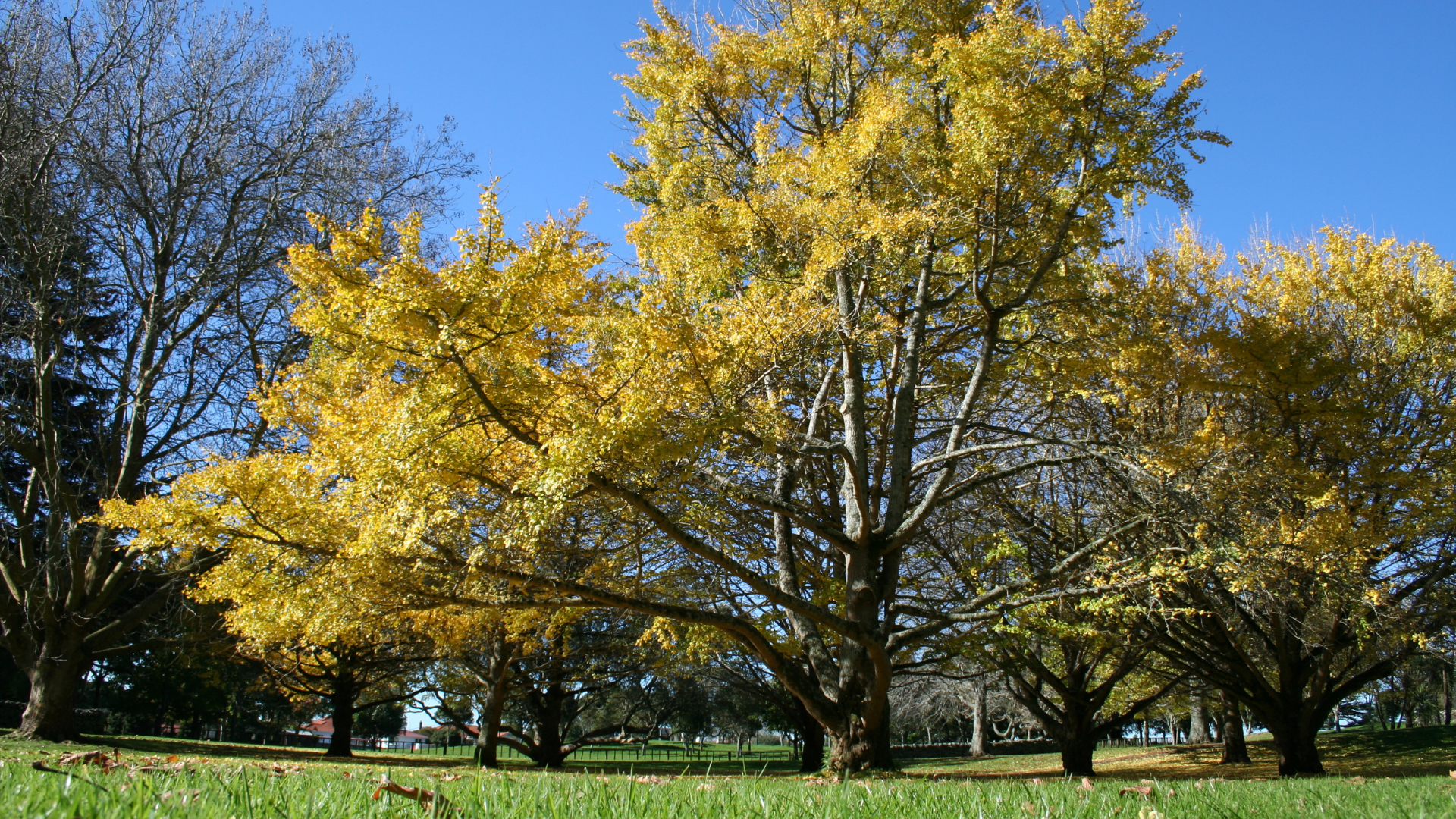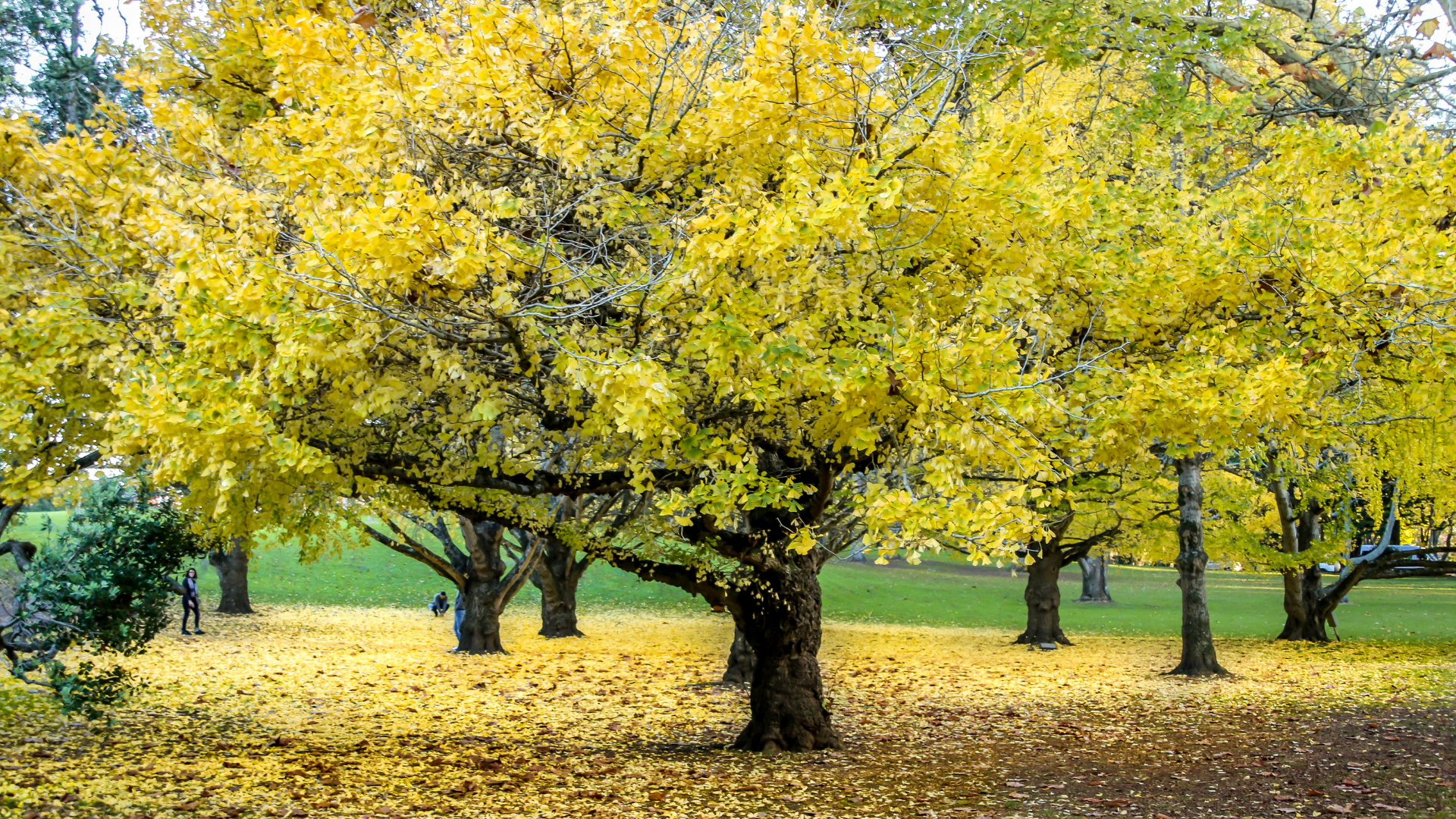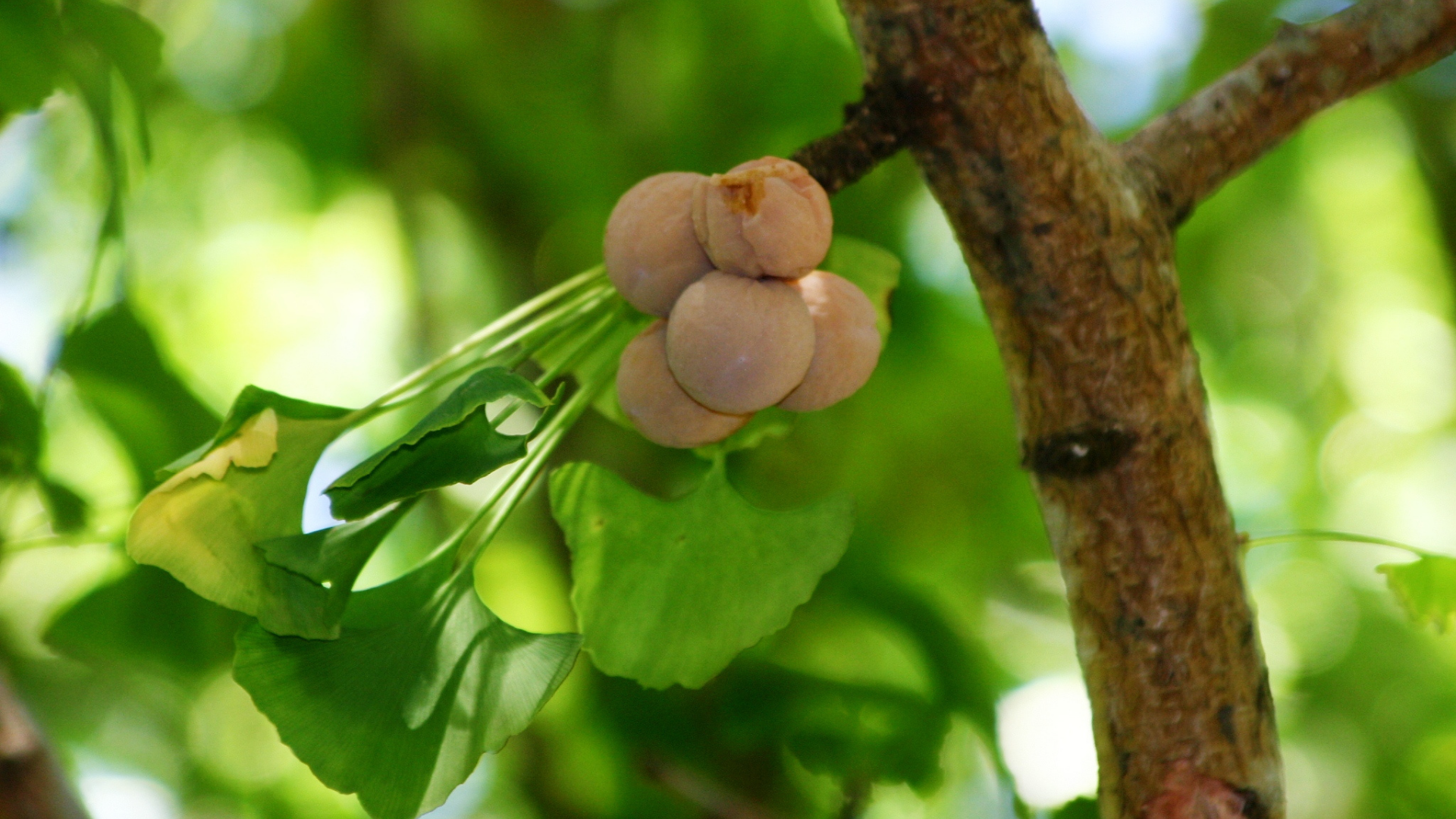Ecology
april's tree of the month, the ginkgo
This month we want to highlight one of our favourite autumn trees - Ginkgo! These stunners will lose their leaves every autumn in a fantastic show of yellow, turning the green grass into a soft golden carpet. Read on to learn about the evolution, history, cultural uses and benefits of these magical trees that make them so unique.

Evolution
Gingko (Ginkgo biloba) are one of the world's oldest living tree species, being the sole survivor of an ancient group of trees that existed before dinosaurs roamed the Earth – between 245 and 66 million years ago. Because of this, ginkgo trees are often referred to as 'living fossils', with 200-million-year-old fossils being found that are very similar to the trees of today. Their fan-shaped leaf structure is completely unique, and they are the only living connection between ferns and conifers (such as pines and kauri).
The world has over 400,000 known species of plant that produce seeds, and they are divided into 5 groups. Gingko make up one of these groups by themselves, which is unique as the other groups are made up of a range of species. This shows how different they are compared to other plant species as they have evolved entirely seperately and remained alive all this time.

Cultural History
Thousands of years ago ginkgo trees were declining in numbers, until their range reduced from most of Eurasia to just part of China. However, instead of becoming extinct, their numbers stabilised! It is thought that the Palaeolithic residents of China discovered ginkgo as a food source by removing the smelly outer layer of the ginkgo fruit finding a nut resembling a pistachio. Once they began eating these regularly, they began replanting them to harvest the nuts. The harvesting and incorporation of ginkgo into Chinese culture allowed them to survive despite their lack of adaptiveness to the new conditions. Some ginkgo trees at Chinese temples are believed to be over 1,500 years old. What a heartening story of humans saving a species!
Ginkgo have been introduced to many countries throughout the world, having been commonly cultivated in North America for over 200 years and in Europe for close to 300, so you'll see them many places if you travel!

Cultural Significance
Ginkgo nuts are valued in Asia and are a traditional Chinese food. They are used in congee (a type of rice porridge or gruel) and are often served at special occasions such as weddings and Chinese New Year, as part of the dish called 'Buddha's delight'. Japanese cooks add ginkgo seeds (called ginnan) to dishes such as chawanmushi (a savory teacup steamed egg custard), and cooked seeds are often eaten along with other dishes.
Ginkgo has also been used in traditional Chinese medicine since the 11th century, with their seeds, leaves, and nuts used to treat various ailments, such as dementia, asthma, bronchitis, and kidney and bladder disorders.
The ginkgo leaf has been used as a symbol of longevity and is the symbol of the Urasenke school of Japanese tea ceremony. The tree is the official tree of the Japanese capital of Tokyo, and the symbol of Tokyo is a ginkgo leaf.

We hope you enjoyed learning about our favourite Autumn tree!
Find mature ginkgo trees at our Ginkgo Grove, located on the paths near our Rangitoto Steps (no. 12 on our park map.
They have golden hues in autumn, are beautifully bare in winter, and are otherwise vibrant and green to visit all year round!
References and further reading on ginkgo:
https://en.wikipedia.org/wiki/...
